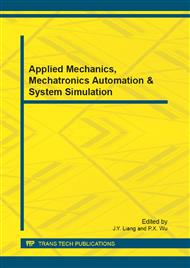p.3
p.9
p.14
p.19
p.23
p.28
p.32
p.36
p.40
First-Principles Calculations on the Electronic Structure of ZnO Nanowires
Abstract:
Based upon the density functional theory (DFT) in this paper, the first-principles approach is used to study the electronic structure of different cross-sectional diameters of ZnO [0001] nanowires of wurtzite structure. The results show that ZnO [0001] nanowires have a wide direct band gap. Located in the G-point of the Brillouin zone the conduction band minimum and valence band maximum are relatively smooth. The conduction band is mainly composed of Zn 4s and Zn 4p states, and the valence band is composed of Zn 3d and O 2p states. The effective mass of conduction band electrons and valence band holes are large while their mobility is very low which show that conductive ability of pure defect-free [0001] ZnO nanowires is weak. Along with the increase of the cross-sectional diameters, the band gap gradually decreases that indicates quantum size effects are obvious in the nano size range.
Info:
Periodical:
Pages:
23-27
Citation:
Online since:
September 2012
Authors:
Price:
Сopyright:
© 2012 Trans Tech Publications Ltd. All Rights Reserved
Share:
Citation:


